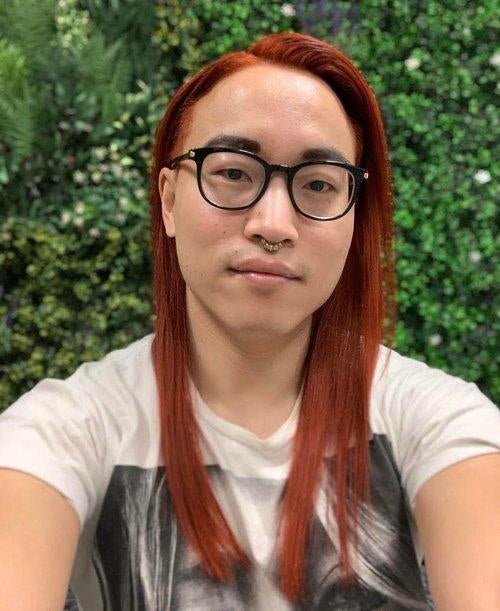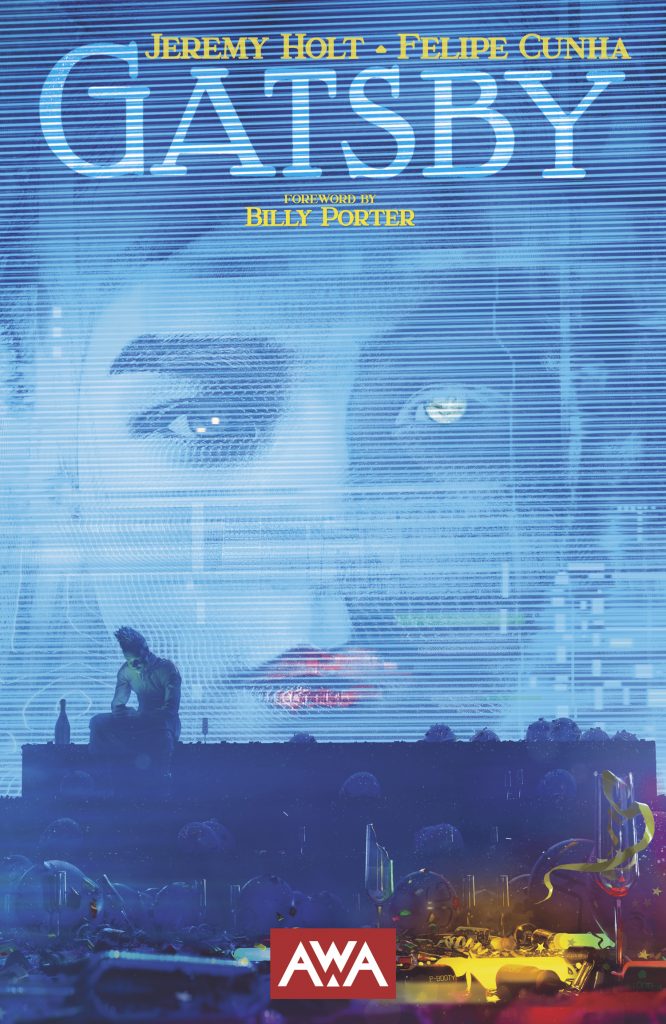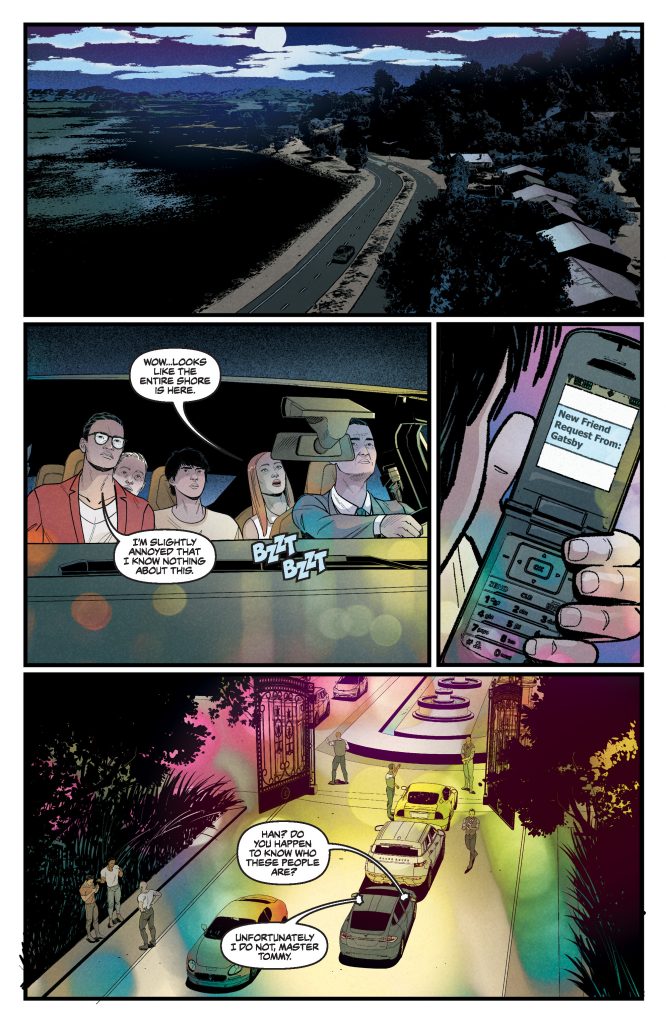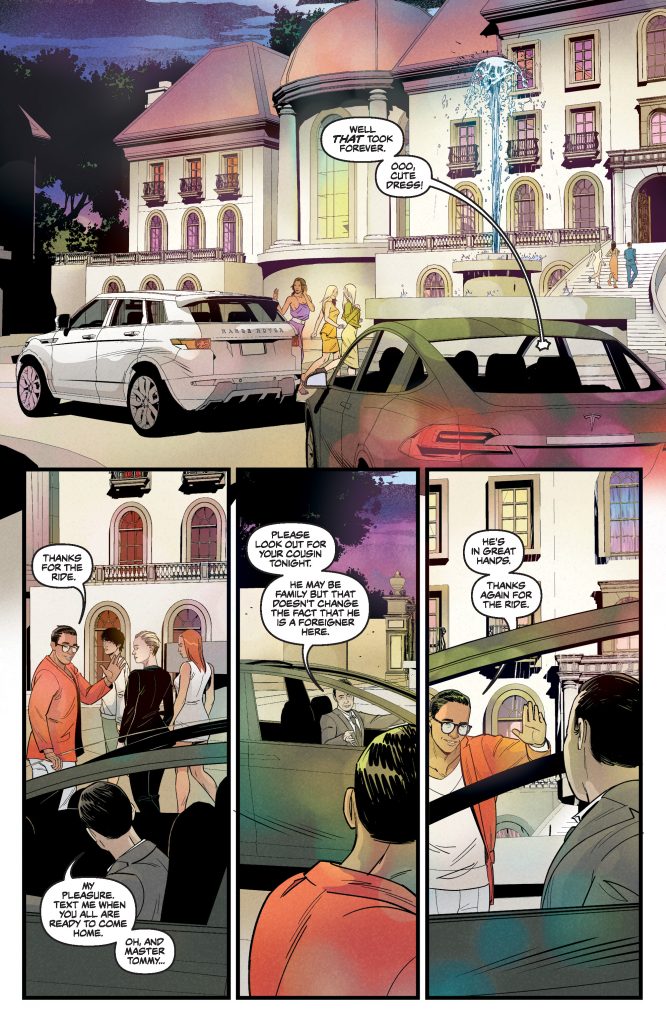
Writer Jeremy Holt
The Great Gatsby, the classic fiction novel by F. Scott Fitzgerald, is a classic that has been adapted for film numerous times and pored over by scholars, high school Language Arts students, historians, and those interested in the allure and heartache of the United States in the 1920s. And it’s easy to see why: Fitzgerald uses the book to comment on the American Dream, how we are bound to and hindered to by our societal roles, and how much we can know a person. Through the prism of an unreliable narrator, we learn not only about the millionaire Jay Gatsby, but his social circle, how they impact him, and vice versa.
However, while there are universal themes examined in the book, it is a story that may not always connect with modern audiences. The story takes place 100 years ago with a cast that is mostly packed with heteronormative white people in an age before technology and some of the modern-day issues that impact us today. That’s where Jeremy Holt comes in. In their new graphic novel Gatsby from AWA Studios, the writer has taken the familiar tale that we know and woven it into a story that mirrors our world; at the same time keeping the universal themes seen in the original and adding new ones. The cast has been re-imagined with a more diverse cast of queer people and People of Color to more accurately reflect our world.
I spoke with Jeremy Holt recently about the impetus of adapting the story of The Great Gatsby for the 21st century, the process making their Gatsby relevant to our modern world, how their personal history helped inform their retelling, and why we keep going back to the story.

FreakSugar: Before we get into the graphic novel itself, what is your personal history with the book The Great Gatsby?
Jeremy Holt: My personal history with the book is quite brief. I was never assigned it as required reading in high school, so I didn’t pick it up until 2017. But needless to say, I was instantly enamored with its themes that felt, rather surprisingly, quite relevant.
FS: For readers who might not be familiar with the original novel, what is the conceit behind The Great Gatsby and what is it about the novel that compelled you to adapt it for the graphic novel format?
JH: The book, as I see it, ultimately explores wealth, societal class status, reinvention, and the American Dream. All the while, celebrating the illustrious Jazz Age of the early 20th Century. What compelled me to adapt this was to see if a 21st Century Gatsby could exist, and if so, what would that look like. During early development, I wasn’t entirely convinced that Gatsby could operate in the digital age. With the advent of social media, algorithms, and the incessant tracking of our smartphones, it seemed unlikely. That was until I realized that I know people that have almost no digital footprint. From there, updating the character within a contemporary setting and context was rather seamless.

FS: How would you describe your version of the story, Gatsby? You set the graphic novel in the world of today with a more diverse cast that reflects our 21st-century world. What was the impetus for transporting the world of the original to our modern era?
JH: My approach to this reimagining is firmly rooted in providing a proper and diverse representation that more accurately reflects the America that I know it to be. As a queer POC author, it has become a focus of mine to craft stories that showcase characters that look like me. Writing from a place of authenticity emboldens me to examine some hard societal and personal truths that will hopefully resonate with readers.
FS: Can you walk us through the cast of Gatsby? Who are they and what was the process like in adapting them for this version of the story?
JH: The names of the cast and some of the relationships between them may have been modified, but their core narrative arcs have remained intact. I decided to de-age them because of my unabashed love for teen drama shows like Dawson’s Creek, The O.C., Felicity, Popular, Life as We Know It, and HBO’s Gossip Girl. In my story, Gatsby isn’t the only one that has the means and drive to reinvent himself. This concept is not only ubiquitous with social media apps, but lends itself to exploring each character’s motivations within this context. The most notable creative license that I had to invoke was altering the relationship between George and Myrtle Wilson. Instead of husband and wife, I made them brother and sister. Adapting all of them for this contemporary version was quite easy once I had established the world that they were to inhabit.

GATSBY page 26
FS: Is there a character that particularly clicked for you when adapting them to Gatsby?
JH: The Nick Carraway/Lu Zhao character resonated with me on a personal level. As a Korean-American, identical triplet, adoptee, I have spent my entire life examining my identity. More specifically, I have often felt like a respectful observer, much like Nick in the original text. However, when I was adapting this, I wanted to address the white, heteronormative structure of the character. In that regard, Carraway is far less interesting to me because even though he might be an outsider to the wealth around him, he still benefits from all of the advantages of being a white man in America. By adapting the character to be Singaporean, I was able to explore the outsider archetype in a multifaceted way that makes for a much more interesting and compelling protagonist to follow.
FS: I teach high school history and it’s astounding the parallels between the 1920s and the original book’s setting and today. Did any of that impact you as you were adapting the novel?
JH: Absolutely. If the parallels hadn’t jumped out at me as they did, I wouldn’t have given an adaptation a second thought. I had originally adapted this to be a Young-Adult prose novel, but after completing the manuscript, I realized that I had played it safe and didn’t take enough risks with it. There was less diversity, the story took place on a college campus, and the characters lacked purpose within the story. Having gotten that first bad sketch out of my system, I went back to the proverbial drawing board with the pieces that remained interesting and retooled it as a graphic novel framed within a loose police procedural/crime thriller.

GATSBY page 27
FS: Following up on that, what were some of the considerations you had to take into account when adapting the novel to the four-colored world of comics?
JH: Before I started, I made a list of all the key visuals that makes the book so special. However, during my outlining phase, it was clear that some things were going to get cut like the green light, the Jazz Age, and Dr. TJ Eckleberg’s billboard. These were necessary sacrifices because they didn’t properly fit within the context of my story. I did manage to sneak in some visual Easter eggs that pay homage to the last two I mentioned; for TGG aficionados.
FS: Why do you think we keep going back to Gatsby? What do you hope readers take away from your version?
JH: I think we keep going back because F. Scott Fitzgerald crafted a world that we enjoy spending time within. Our context to that world has certainly changed, but the subjects explored within it are timeless. My ultimate hope for this book is that it entertains longtime fans of TGG, as well as newcomers that have never read it. I want the world, that I have designed with artist Felipe Cunha and colorist Dearbhla Kelly, to be an exciting place that you want to continuously return to for the next century.

From GATSBY
FS: The book is gorgeous. What was the process like working with Felipe Cunha?
JH: Agreed. It was an absolute pleasure co-creating this book with Felipe. Our process was simple. I embedded as many reference images as my heart desired within my script and he’d not only draw every single detail, but would do it with a speed and efficiency that astounded me and the entire editorial staff. There is nothing that man can’t draw.
FS: If you had one final pitch for readers considering picking up the graphic novel, what would it be?
JH: This is not the book you may or may not have been forced to read in high school. This is the book that showcases a cast of characters that you wish you were friends with in high school. You already know how this ends, but the journey that this story will take you on is far more interesting and compelling than the destination.
Gatsby goes on sale May 10th from AWA Studios.
From the official graphic novel description:
When middle-class Singaporean student Lu Zhao is invited to spend a summer on Long Island with his rich cousin Tommy, before attending Columbia University in the fall, his assimilation into the opulent American lifestyle straps him into a collision course fueled by designer drugs, sex, deceit, and murder. Gatsby is an LGBTQIA-led, racially diverse series that reimagines F. Scott Fitzgerald’s The Great Gatsby, set in present-day Long Island.
